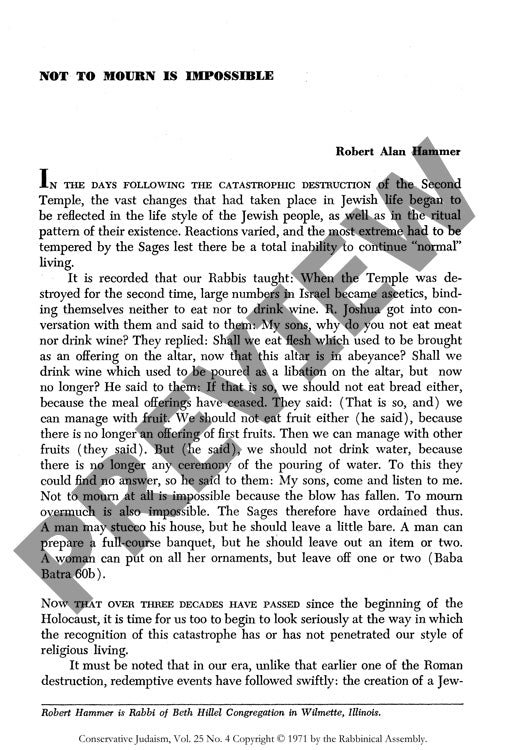Not to Mourn Is Impossible
Couldn't load pickup availability
Jewish communities have largely abdicated responsibility for Holocaust commemoration to secular organizations, creating a critical gap in religious observance that parallels the robust rabbinic response to the Second Temple's destruction. Despite Conservative Judaism's historical adaptability, synagogues have failed to meaningfully integrate Holocaust remembrance into regular religious practice, with current Yom haShoah observances typically manifesting as sparsely-attended, rally-style gatherings lacking spiritual depth. Through ethnographic observation of memorial practices across multiple communities and implementation of innovative liturgical approaches over three years, this research documents the impact of incorporating elements such as empty arks, Holocaust literature readings, multimedia presentations, and personalized yahrzeit candle lighting with individual victim names. These interventions demonstrated increased congregational engagement and deeper religious connection among participants. The methodology combined historical analysis with contemporary observation to evaluate both existing practices and new approaches. While the findings confirm that "not to mourn is impossible," they also reveal the urgent need for systematic rabbinic leadership and congregation-based ceremonies to transform Holocaust remembrance from peripheral community events into central religious observances that adequately address the magnitude of this historical tragedy.

More Information
-
Physical Description
-
Publication Information
Published 1971
ISBN
-
Publication Credits

